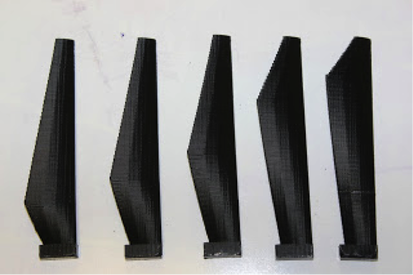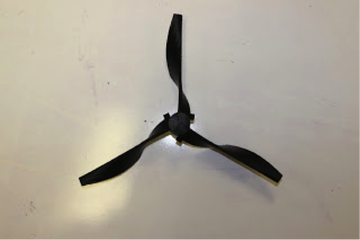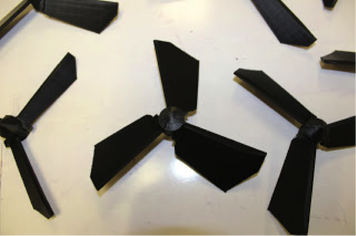Mini-Wind Turbine Model
This will work great in a physics classroom. Below is a download of a Mini-Wind Turbine Model from Thingiverse that was created in Tinkercad. Be sure to play with it a bit to figure out exactly what the variables did and then introduced it to your class. If they are more experienced you could let the students figure out what each of the variables does for themselves.
Model Blade Download: |
|
Model Blade Holder Download: |
| ||||||||||||
Have the class pick as least two parameters to vary. Examples:
- Length
- Width
- Angle - Which was really twist
- "Fat Point" - Ratio of top length to bottom length
Let the students minds run wild with designs.
Have the students graph and find the relationship for each of the four parameters. It may be found that none of the parameters will give you very good mathematical relationships. with a bigger variation and more data points in between in another should help.
Once data has been analyzed by the students, have them design the perfect wind turbine. Some groups will rely on their data and some will not. It should really come as no surprise that the groups that relied on the data in most cases do the best. Often when the students pick the one with the best data point in each and put them together it will lead to the very best one extrapolated from their data to predict a better solution.
Once data has been analyzed by the students, have them design the perfect wind turbine. Some groups will rely on their data and some will not. It should really come as no surprise that the groups that relied on the data in most cases do the best. Often when the students pick the one with the best data point in each and put them together it will lead to the very best one extrapolated from their data to predict a better solution.
The one students often find the best, looked the least like our pre-conceived notion. It had fat stubby wings rather than long and thin.



